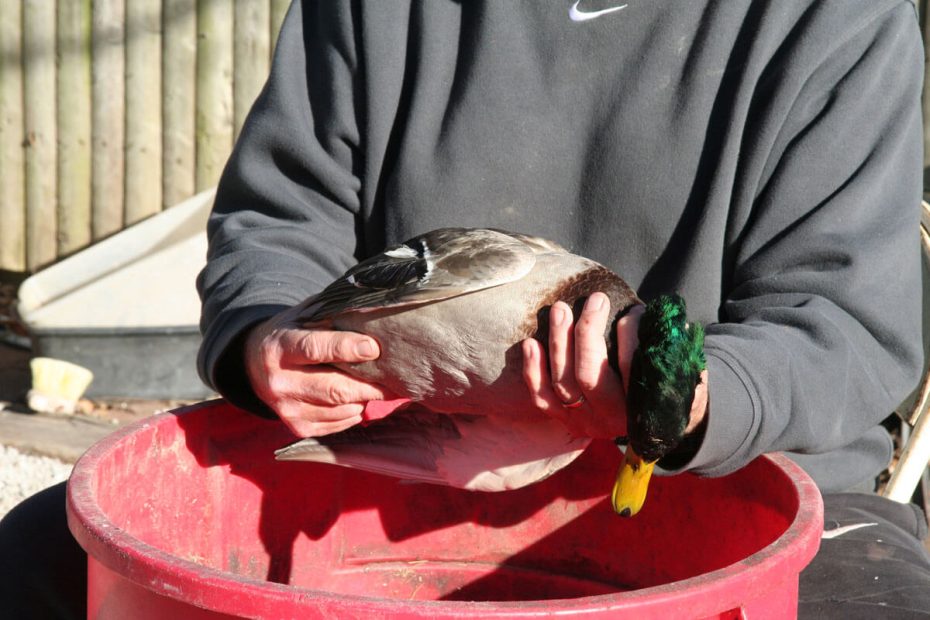I was probably five or six when I got my first duck and then of course the right of passage required I clean the duck. I had watched my father who I can only assume learned from his father but I still today, do it as he taught me way back then.
The Mallard duck is the prize most of us aspire to harvest and more to the point, the male green-headed Mallard. I have seen these as huge fat birds and thin young birds, and of course, the fat ones are most desired.

Start the process by first understanding you do not pick or pluck a duck; you roll the feathers and down off. One exception is the neck where you gently pull the feathers towards the head. Hold the duck by the neck and put the body on the edge of the trash can where you can shed the feathers directly. Begin by pushing your thumb across the breast feathers toward the tail. Again, do not pick the duck and go with the grain from neck to tail. If you pick you will leave behind down and feathers. Keep pushing the feathers off to completely clean the breast.
Don’t worry about pinfeathers and hair as that will be cleaned up later. A word on pinfeathers, “blood feathers” is that leaving them behind can create an unsavory taste so if too many are present you may have to skin or breast out the duck. Continue to rotate the duck and do the same for the back. Clean under the wings in what would be the wing pit.



Once done with the body, work up the neck a few inches to clean it and work the feathers off the inside portion of the wings. Be gentle here and pull the feathers toward the head. Be careful or you will tear the skin. Do the legs also. No need to go too far out the wing, but clean that too so you can next remove the wings. Some will clean to the first joint so that is your choice. No need to remove the tail feathers but that curly feather looks great in your hat.

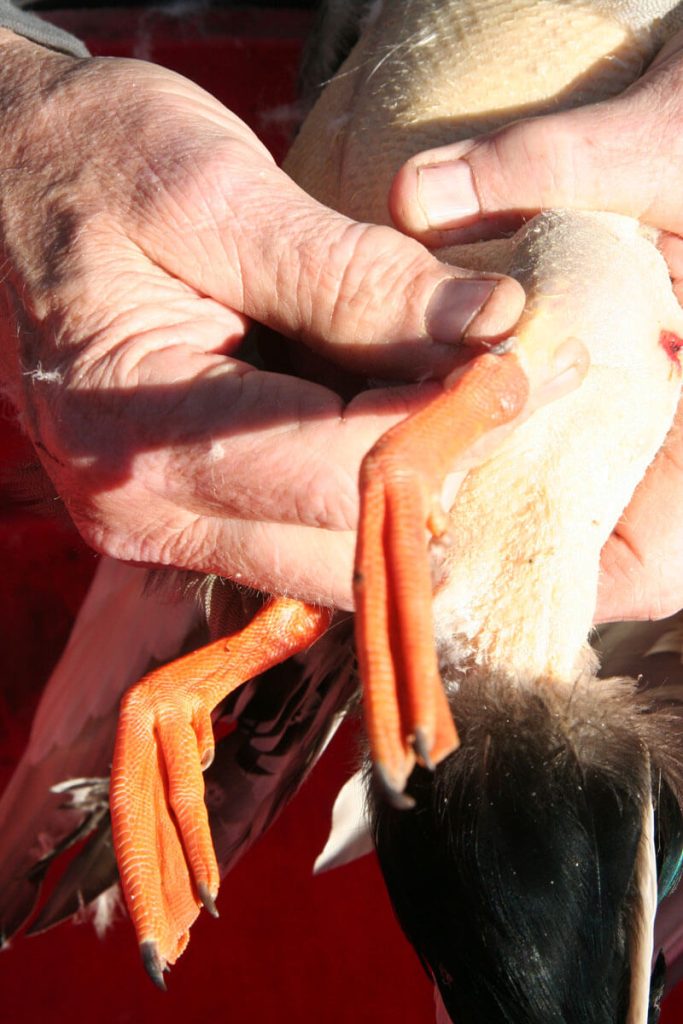
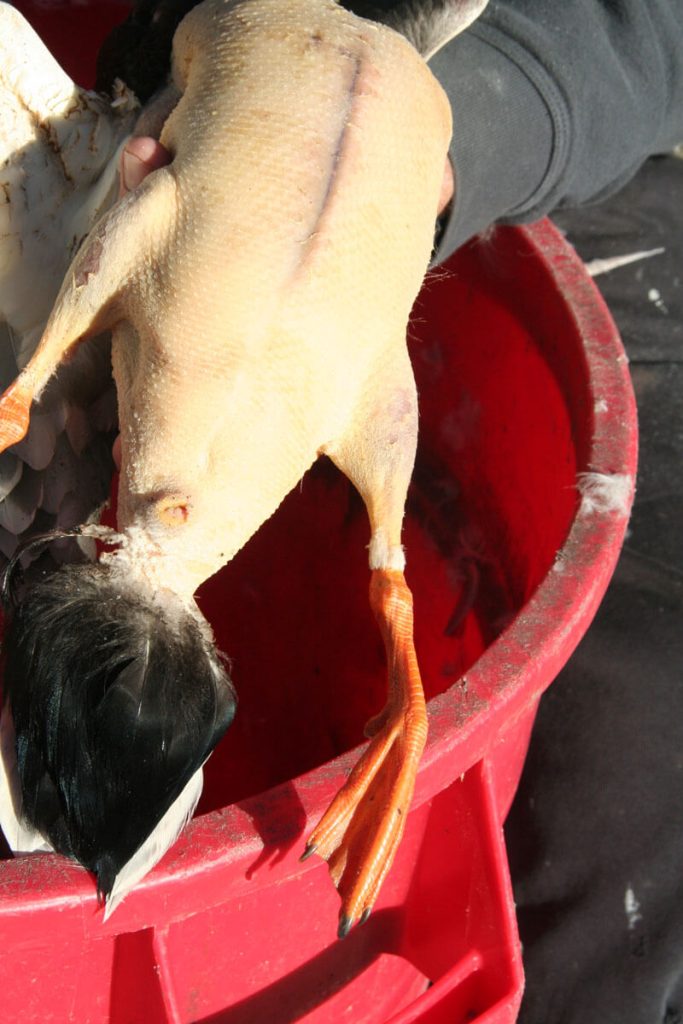
The pinfeathers need to be removed if present so pinch them out. Most of the time a squeeze will push them out or use the edge of a knife to hold the pinfeather and pull it out. The next task is to singe the bird. I use a propane torch, but in a pinch you can use a fire or a few newspapers. I have even seen some use a hairdryer. Just hold the duck by the neck and legs and remove all the hair. Note, I have not removed the legs, or neck yet.

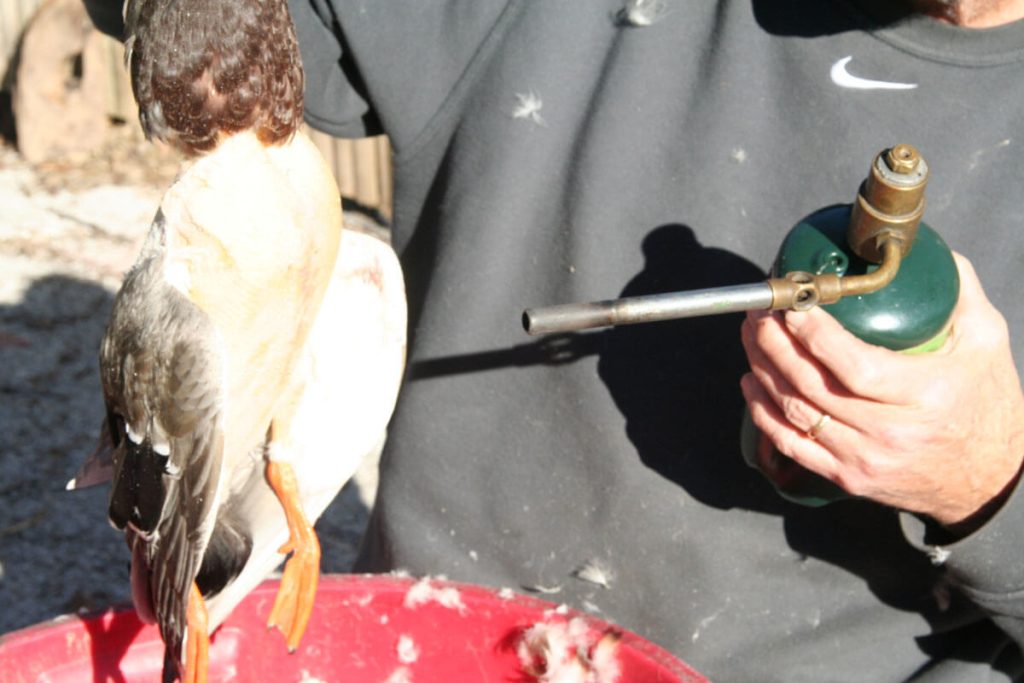
Take a pair of shears or wire cutters and break the wing bone to then cut through the skin and muscle to remove the wings. Be very careful as the bone can break and be very sharp. Nip off the sharp ends with your shears. Do the legs too.


Now you can remove the neck with a large set of shears and remove the feet too. Next, the body needs to be gutted. Many will vent the duck through the tail, but a better method is to use your shears and cut the duck down the middle of the back. Now open the body wide open and remove the guts. Use your knife to cut around the anus and preen gland and pull all that out with the guts.
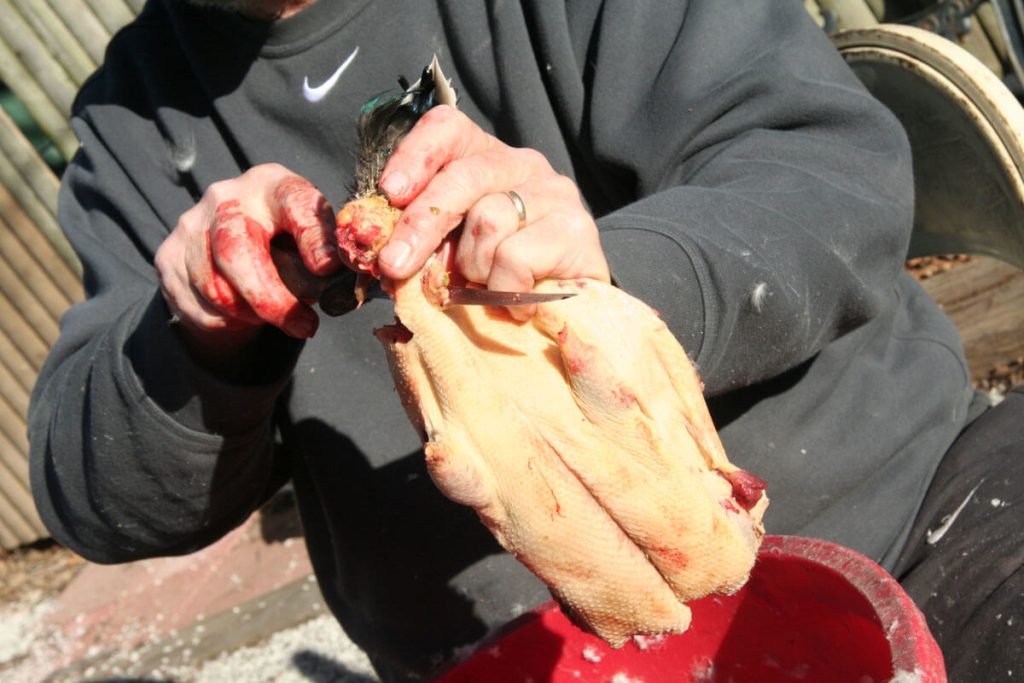

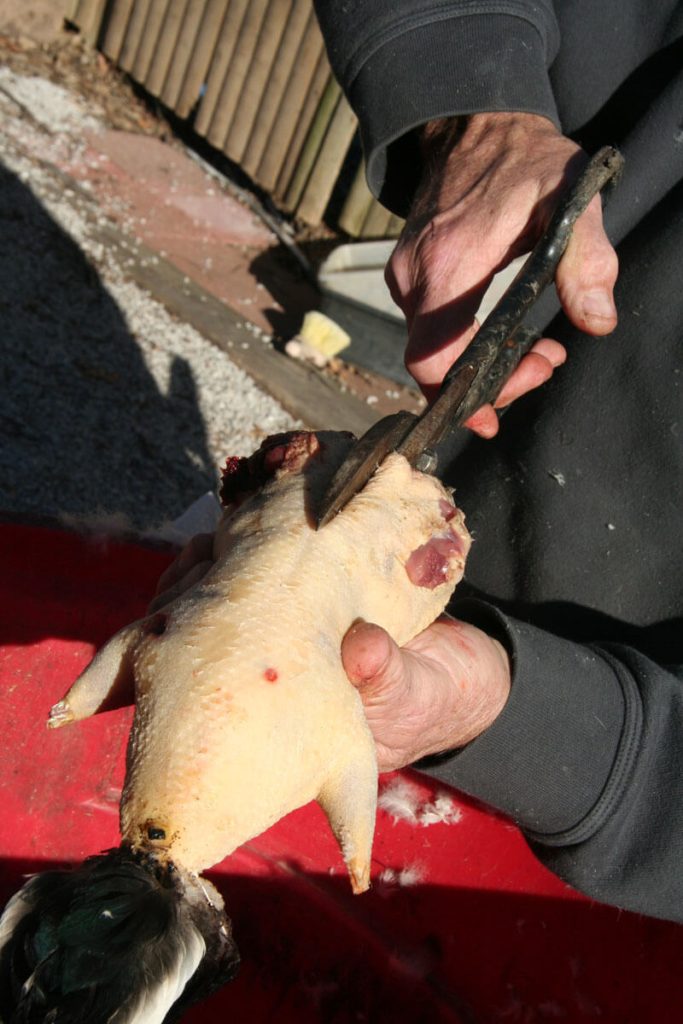

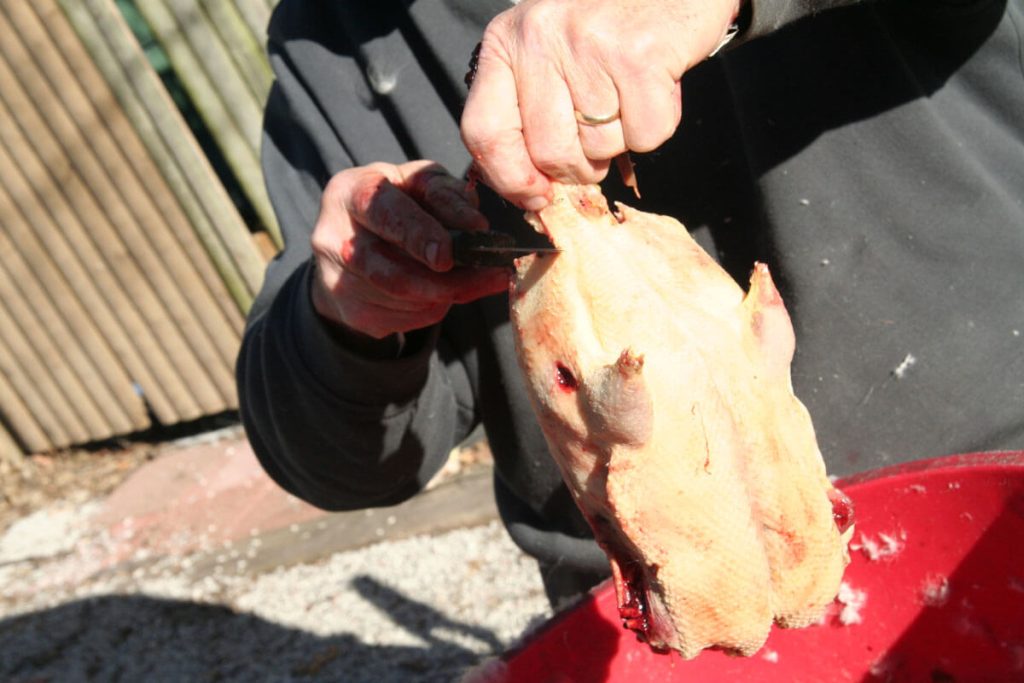


I then use a garden spigot and wash out the interior completely. Be careful as there are a couple of sharp bones in the cavity. Using a force of water will remove all the blood, lungs, and other internals easily. Wash the duck well and then you need to soak it in saltwater overnight before cooking or freezing.

There you have it – a simple process leaving you a duck you can eat. As always you have to be careful with steel shot as it tends to break teeth. Just be careful.


There are different recipes for the brine, but I just use salt overnight. Some add brown sugar and Worcestershire sauce but feel free to add your own style. Enjoy the flavor of a Mallard you shot, cleaned, and prepared for dinner.
